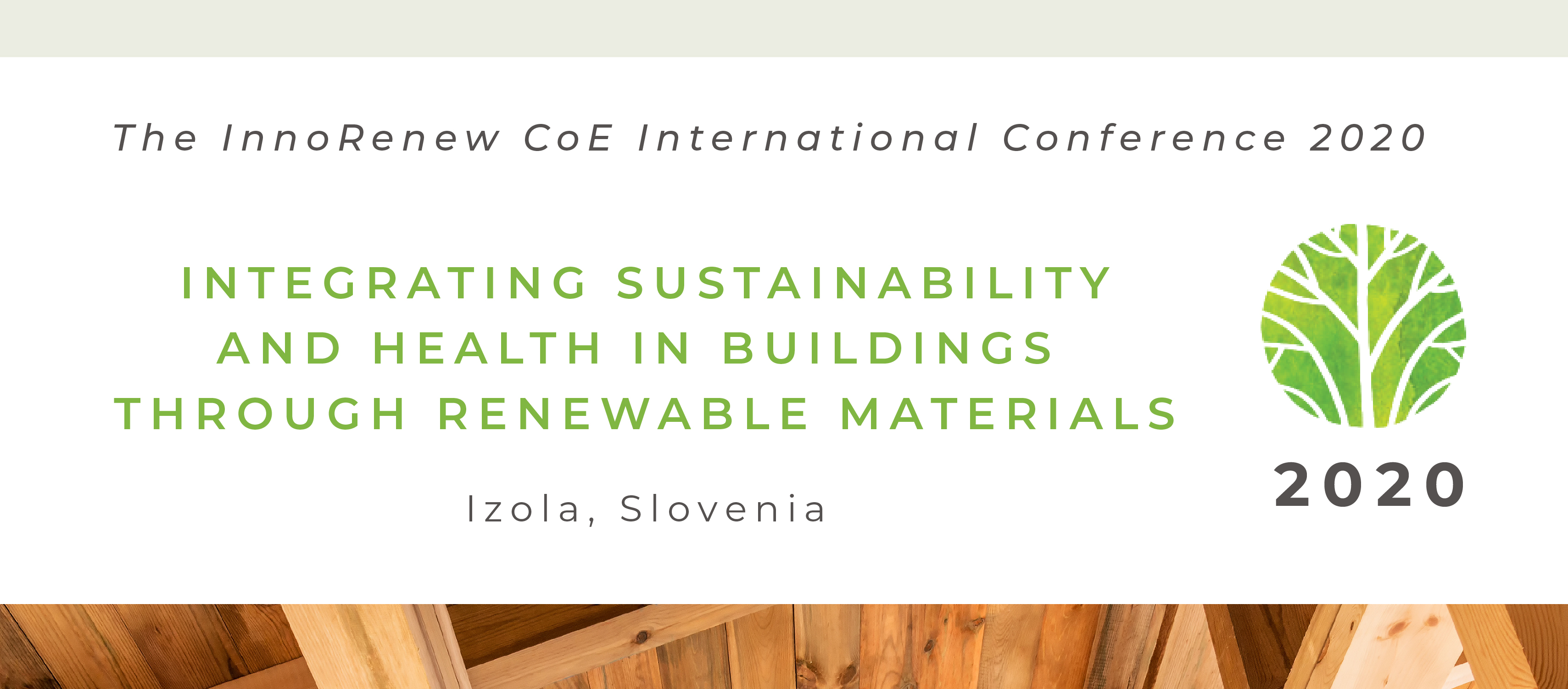Description
3 minute flash presentations with posters.
Residential satisfaction is a frequently studied topic in recent decades as it can offer important insights into the quality of residential environment, beneficial both from theoretical perspective as well as for practical purposes. One of the most prominently used methods of measuring residential satisfaction is the use of self-assessment questionnaires measuring satisfaction by assessing...
The biggest stress on the sustainability of our environment is caused by the construction industry. More than 30% of the global pollution emissions are caused by the development of the built environment without ecological awareness. It is time for the conscious design process, to shape our built environment in a sustainable and humane way, in accordance with nature. The creative students and...
The hydrophilic nature of wood is based on its structural anisotropy and its strong affinity to hydroxyl functional groups (mainly due to the polysaccharides present in its structure), making wood very reactive with water. The environmental factors can cause instability to the wood matrix and its deterioration, thus, several wood modification techniques have been developed to ensure its...
The classification of logs in the forest is the first stage in the evaluation of wood's technical quality and serves as the point of departure for subsequent tasks needed to trade and evaluate wood. For ages, wood quality was assessed without the use of advanced technologies, and only by visual inspection (Berglund et al. 2015). In reality, many properties of wood are mutually correlated,...
Office buildings represent one of the most common public building with extremely high cool-ing energy demand and corresponding negative environmental impact in Central Europe. Due to the high wall-window ratio of this building type, the indoor thermal and visual comfort suffers, as a consequence of characteristic summer overheating and winter heat loss.
The current office building design...
Smart home systems can make the living more comfortable. Moreover they may provide ways to save energy, thus they can help to achieve sustainable buildings. The possibilities are wide and the energy savings can be as high as 45%. To achieve such high values the capabilities of the smart home system must be known to the person using it. The Department of Technology possesses a working smart...
The increased concern regarding mould on wood-based building materials has raised demand for sustainable biocidal treatments to protect early contamination during the construction stage of timber buildings. By providing surface protection for all type of wood-based construction elements already at the construction site will reduce the mould-associated risk for not only the construction...
Australian sawn-board product is regulated by timber’s physical and mechanical properties to ensure safe operating performances in context specific applications. Contemporary and emerging timber resources however, are lacking the traditional properties of commercially sawn products, namely density. One technique used to improve timber properties is densification through thermo-hydro-mechanical...
Cross laminated timber (CLT) is one of the most popular engineered wood products. The main species used for this product is spruce. To respond to the strongly increasing demand of CLT, it will become necessary to also investigate additional raw material resources for its production. Pine – having in mind its availability, mechanical properties and ability to grow even in regions with poor...

